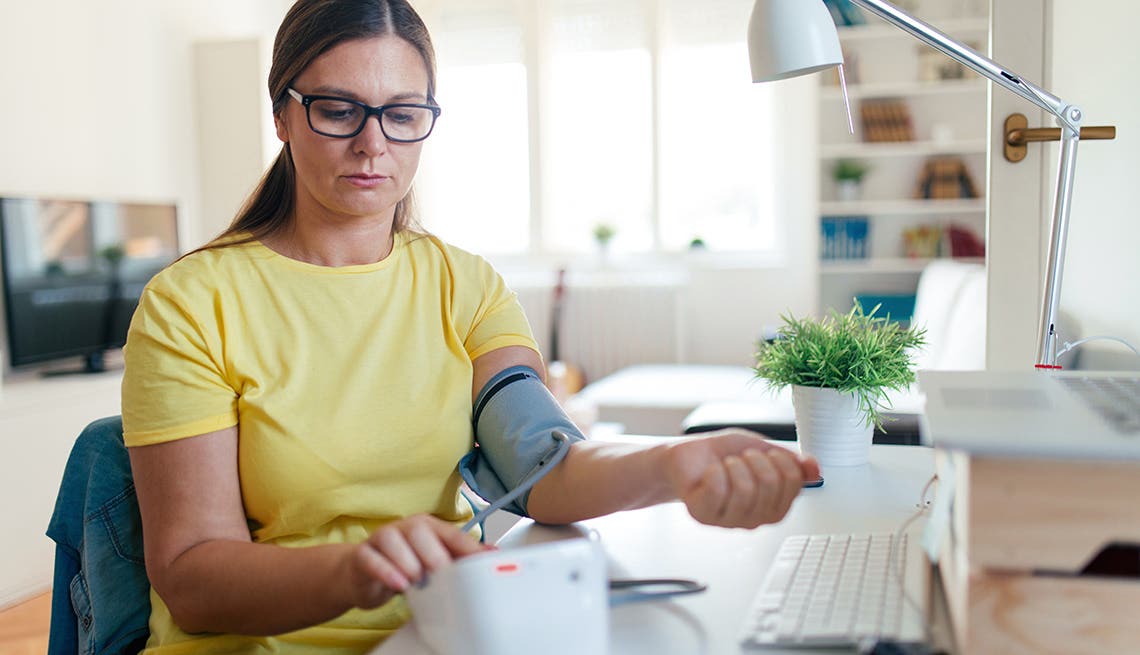Are blood pressure readings more accurate at home or clinic?
Blood pressure measurements routinely taken at home are more likely to provide the basis for accurate diagnoses of hypertension.

[Mar 7, 2022: Alexandra Yellin, Kaiser Permanente]
Blood pressure varies a lot over the day — about 30 points systolic — and 1 or 2 measurements in clinic may not reflect your average blood pressure. (CREDIT: Creative Commons)
SEATTLE — Blood pressure measurements routinely taken at home are more likely to provide the basis for accurate diagnoses of hypertension than those taken in a clinic setting, according to a new study led by Kaiser Permanente investigators.
The findings come from a randomized controlled trial of 510 adults who visited one of 12 Kaiser Permanente primary care centers in Western Washington between 2017 and 2019 published today in the Journal of General Internal Medicine.
“Blood pressure varies a lot over the day — about 30 points systolic — and 1 or 2 measurements in clinic may not reflect your average blood pressure,” said Beverly B. Green, MD, MPH, the study’s first author, who is a senior investigator at Kaiser Permanente Washington Health Research Institute and a physician at Washington Permanente Medical Group. “Home blood pressure monitoring allows you to collect many more readings and average these.”
To conduct the study, researchers used electronic health records to identify potential participants who were at high risk of having hypertension based on a recent clinic visit. They then randomly divided the participants into 3 groups based on the method for obtaining follow-up blood pressure measurements: in clinic, at home, or at kiosks in medical clinics or pharmacies.
In addition to these measures, every participant received 24-hour ambulatory blood pressure monitoring, or ABPM, the gold standard test for making a new diagnosis of hypertension. ABPM uses a full upper-arm cuff connected to a waist-carried device that is worn continuously for 24 hours and inflates every 20 to 30 minutes during the day and every 30 to 60 minutes at night. ABPM provides the most precise diagnostic information but is not available for widespread use. The researchers were able to determine the accuracy of the 3 other methods by comparing their results with the ABPM results.
Related Stories:
The study found:
Blood pressure readings taken at home were consistent with ABPM
Blood pressure readings based on follow-up clinic visits were significantly lower for the systolic measure, leading to over half of the people with hypertension based on ABPM being missed
Blood pressure readings from kiosks were significantly higher than measures based on ABPM, resulting in a higher likelihood of overdiagnosis of hypertension
“Home blood pressure monitoring was a better option, because it was more accurate than clinic blood pressure readings,” Dr. Green said. “Furthermore, a companion study found that patients preferred taking their blood pressure at home.” The companion study findings were presented at an American Heart Association Hypertension meeting.
The number of people in the United States with undiagnosed hypertension is likely to be in the millions. One recent analysis published in JAMA estimated that 23% of U.S. adults with high blood pressure were unaware that they had the condition and were not receiving treatment.
Proper diagnosis of hypertension can save a patient’s life. When hypertension is identified, physicians will typically prescribe medication to lower blood pressure. Without treatment, hypertension can cause heart attack, stroke, and kidney damage, among other problems.
Current guidelines for diagnosing hypertension recommend that patients who have high blood pressure readings in clinic have another test to confirm the results. While the guidelines recommend ABPM or home blood pressure monitoring before making a hypertension diagnosis, research shows that providers continue to use in-clinic measurement when conducting the second reading.
While previous studies have found similar benefits to home blood pressure reading, this one may offer the most powerful evidence to date because of its large number of participants, its involvement of primary care clinics, and its use of real-world practitioners to take blood pressure measures instead of research personnel. Also, this study is the first to compare kiosk and ABPM results.
For more science and technology stories check out our New Discoveries section at The Brighter Side of News.
Note: Materials provided above by Kaiser Permanente. Content may be edited for style and length.
Like these kind of feel good stories? Get the Brighter Side of News' newsletter.
Tags: #New_Discoveries, #Blood_Pressure, #Medical_News, #Hospital, #Science, #Home_Care, #Research, #The_Brighter_Side_of_News
Joseph Shavit
Head Science News Writer | Communicating Innovation & Discovery
Based in Los Angeles, Joseph Shavit is an accomplished science journalist, head science news writer and co-founder at The Brighter Side of News, where he translates cutting-edge discoveries into compelling stories for a broad audience. With a strong background spanning science, business, product management, media leadership, and entrepreneurship, Joseph brings a unique perspective to science communication. His expertise allows him to uncover the intersection of technological advancements and market potential, shedding light on how groundbreaking research evolves into transformative products and industries.



